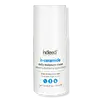What's inside
What's inside
 Key Ingredients
Key Ingredients

 Benefits
Benefits

 Concerns
Concerns

 Ingredients Side-by-side
Ingredients Side-by-side

Water
Skin ConditioningMyristyl Myristate
EmollientSqualane
EmollientGlycerin
HumectantC12-16 Alcohols
EmollientCetyl Ethylhexanoate
EmollientBehenyl Alcohol
EmollientButyrospermum Parkii Butter
Skin ConditioningPersea Gratissima Oil
Skin ConditioningBeta-Glucan
Skin ConditioningCeramide EOP
Skin ConditioningCeramide NP
Skin ConditioningCeramide AP
Skin ConditioningPalmitic Acid
EmollientHydrogenated Lecithin
EmulsifyingPhenoxyethanol
PreservativeCaprylyl Glycol
EmollientAllantoin
Skin ConditioningTriticum Vulgare Seed Extract
BufferingXanthan Gum
EmulsifyingPolyacrylamide
C13-14 Isoparaffin
EmollientDisodium EDTA
Laureth-7
EmulsifyingSodium Lauroyl Lactylate
EmulsifyingPentylene Glycol
Skin ConditioningGlycol
HumectantPhytosphingosine
Skin ConditioningCholesterol
EmollientCarbomer
Emulsion StabilisingEthylhexylglycerin
Skin ConditioningWater, Myristyl Myristate, Squalane, Glycerin, C12-16 Alcohols, Cetyl Ethylhexanoate, Behenyl Alcohol, Butyrospermum Parkii Butter, Persea Gratissima Oil, Beta-Glucan, Ceramide EOP, Ceramide NP, Ceramide AP, Palmitic Acid, Hydrogenated Lecithin, Phenoxyethanol, Caprylyl Glycol, Allantoin, Triticum Vulgare Seed Extract, Xanthan Gum, Polyacrylamide, C13-14 Isoparaffin, Disodium EDTA, Laureth-7, Sodium Lauroyl Lactylate, Pentylene Glycol, Glycol, Phytosphingosine, Cholesterol, Carbomer, Ethylhexylglycerin
Water
Skin ConditioningGlycerin
HumectantCetearyl Alcohol
EmollientGlyceryl Stearate Se
EmulsifyingCetyl Stearate
EmollientPropanediol
SolventCetyl Alcohol
EmollientIsostearyl Isostearate
EmollientPotassium Cetyl Phosphate
EmulsifyingPhenoxyethanol
PreservativeCarbomer
Emulsion StabilisingCetearyl Olivate
Sodium Caproyl Prolinate
HumectantBenzyl Alcohol
PerfumingSorbitan Olivate
EmulsifyingSodium Stearoyl Glutamate
CleansingSodium Polyglutamate
HumectantSodium Gluconate
Skin ConditioningLespedeza Capitata Leaf/Stem Extract
Skin ConditioningEthylhexylglycerin
Skin ConditioningTocopherol
AntioxidantDehydroacetic Acid
PreservativeSodium Phosphate
BufferingStearic Acid
CleansingCaprylyl Glycol
EmollientNonapeptide-1
Skin ConditioningDisodium Phosphate
BufferingWater, Glycerin, Cetearyl Alcohol, Glyceryl Stearate Se, Cetyl Stearate, Propanediol, Cetyl Alcohol, Isostearyl Isostearate, Potassium Cetyl Phosphate, Phenoxyethanol, Carbomer, Cetearyl Olivate, Sodium Caproyl Prolinate, Benzyl Alcohol, Sorbitan Olivate, Sodium Stearoyl Glutamate, Sodium Polyglutamate, Sodium Gluconate, Lespedeza Capitata Leaf/Stem Extract, Ethylhexylglycerin, Tocopherol, Dehydroacetic Acid, Sodium Phosphate, Stearic Acid, Caprylyl Glycol, Nonapeptide-1, Disodium Phosphate
 Reviews
Reviews

Ingredients Explained
These ingredients are found in both products.
Ingredients higher up in an ingredient list are typically present in a larger amount.
Caprylyl Glycol is a humectant and emollient, meaning it attracts and preserves moisture.
It is a common ingredient in many products, especially those designed to hydrate skin. The primary benefits are retaining moisture, skin softening, and promoting a healthy skin barrier.
Though Caprylyl Glycol is an alcohol derived from fatty acids, it is not the kind that can dry out skin.
This ingredient is also used as a preservative to extend the life of products. It has slight antimicrobial properties.
Learn more about Caprylyl GlycolCarbomer is a polymer of acrylic acid. Its main role is to create a gel consistency.
A high amount of carbomer can cause pilling or balling up of products. Don't worry, most products contain 1% or less of carbomer.
Ethylhexylglycerin (we can't pronounce this either) is commonly used as a preservative and skin softener. It is derived from glyceryl.
You might see Ethylhexylglycerin often paired with other preservatives such as phenoxyethanol. Ethylhexylglycerin has been found to increase the effectiveness of these other preservatives.
Glycerin is already naturally found in your skin. It helps moisturize and protect your skin.
A study from 2016 found glycerin to be more effective as a humectant than AHAs and hyaluronic acid.
As a humectant, it helps the skin stay hydrated by pulling moisture to your skin. The low molecular weight of glycerin allows it to pull moisture into the deeper layers of your skin.
Hydrated skin improves your skin barrier; Your skin barrier helps protect against irritants and bacteria.
Glycerin has also been found to have antimicrobial and antiviral properties. Due to these properties, glycerin is often used in wound and burn treatments.
In cosmetics, glycerin is usually derived from plants such as soybean or palm. However, it can also be sourced from animals, such as tallow or animal fat.
This ingredient is organic, colorless, odorless, and non-toxic.
Glycerin is the name for this ingredient in American English. British English uses Glycerol/Glycerine.
Learn more about GlycerinPhenoxyethanol is a preservative that has germicide, antimicrobial, and aromatic properties. Studies show that phenoxyethanol can prevent microbial growth. By itself, it has a scent that is similar to that of a rose.
It's often used in formulations along with Caprylyl Glycol to preserve the shelf life of products.
Water. It's the most common cosmetic ingredient of all. You'll usually see it at the top of ingredient lists, meaning that it makes up the largest part of the product.
So why is it so popular? Water most often acts as a solvent - this means that it helps dissolve other ingredients into the formulation.
You'll also recognize water as that liquid we all need to stay alive. If you see this, drink a glass of water. Stay hydrated!
Learn more about Water